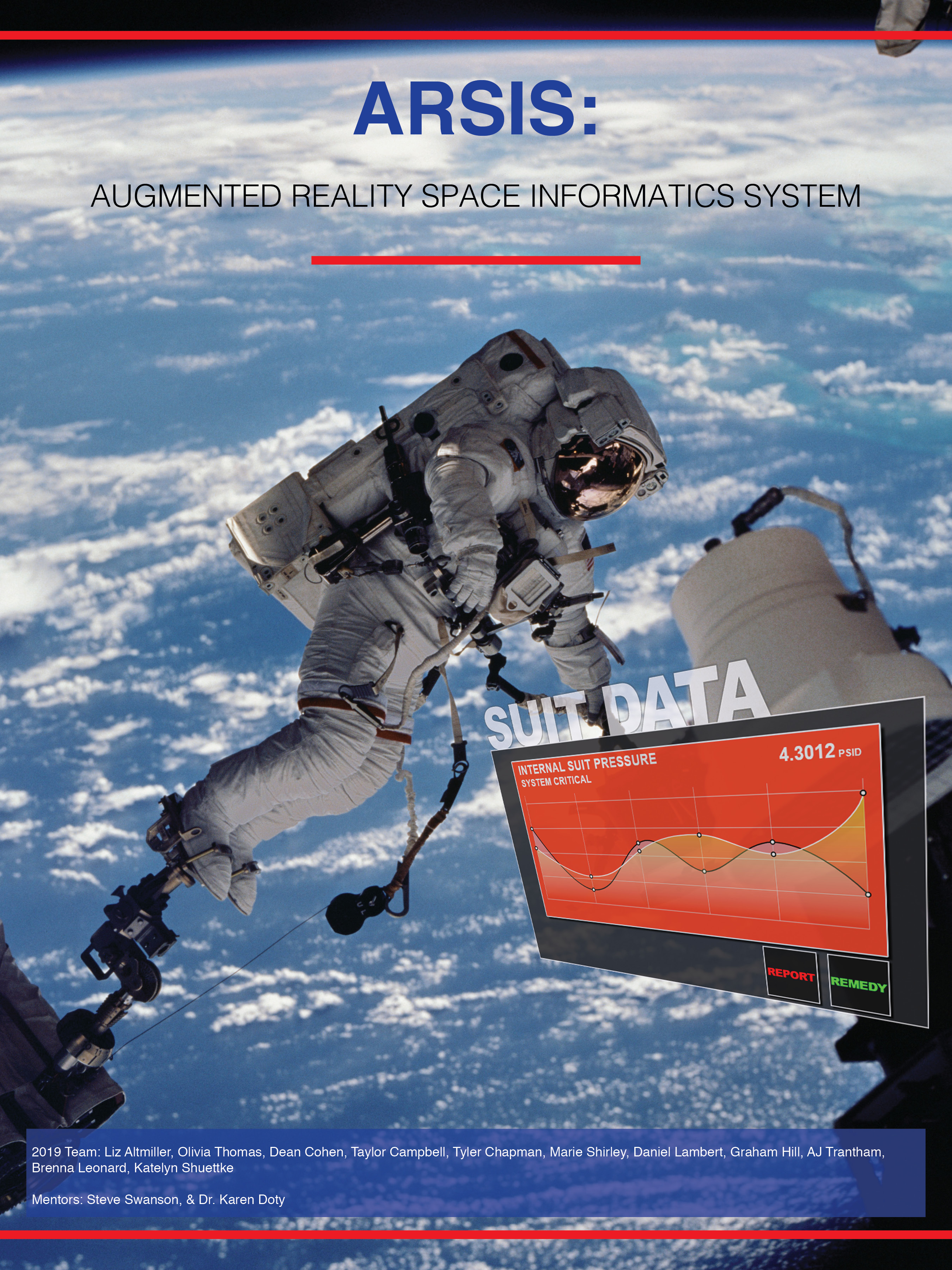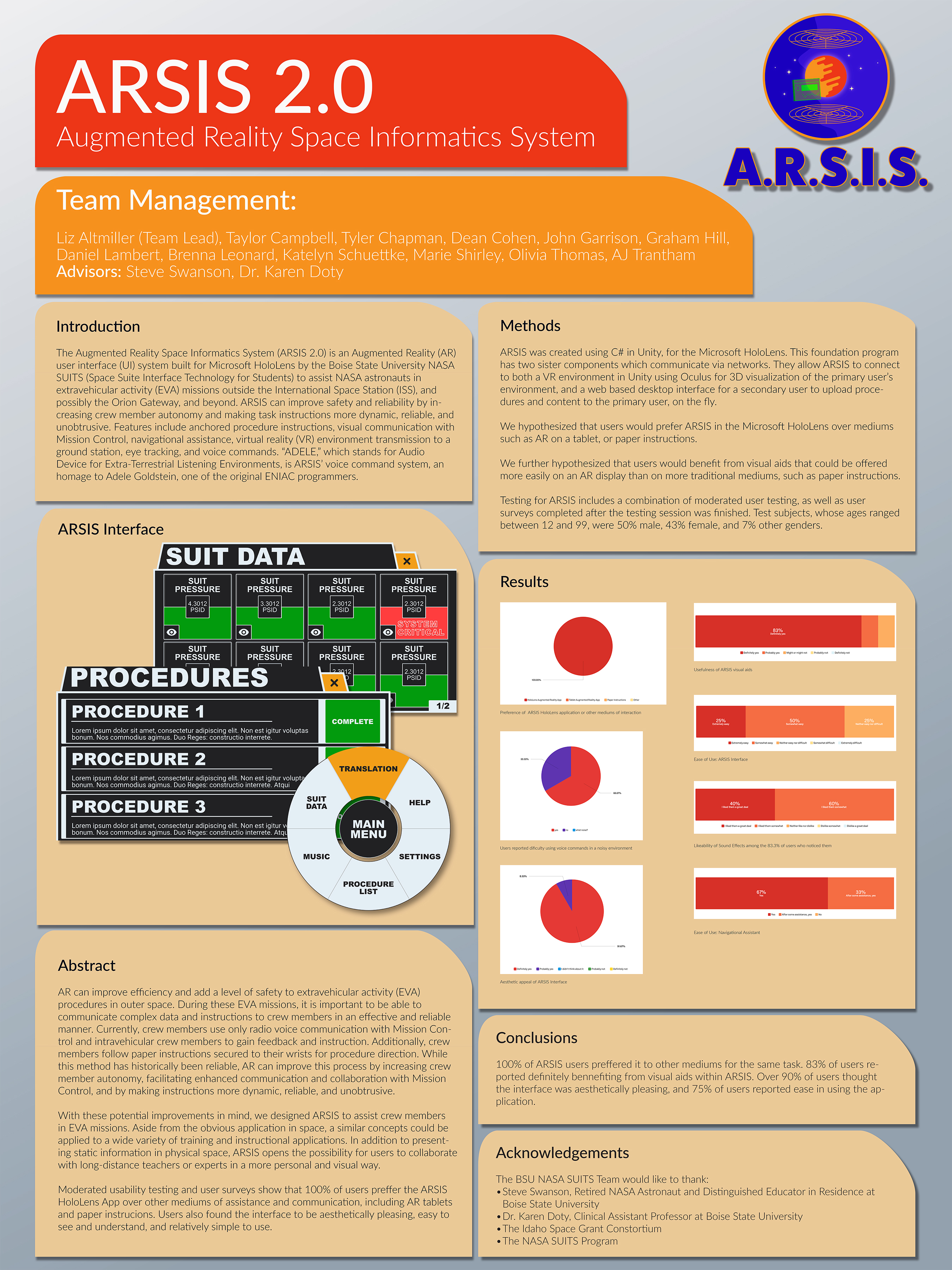Prototyping an Augmented Reality (AR) HUD for Space Suit Helmets
This project builds on the ARSIS 1.0 prototype to develop a Heads Up Display (HUD) prototype for NASA astronaut helmets for use on Extra-Vehicular Activities (EVAs) on the International Space Station (ISS), and eventually on the Orion spacecraft, the Lunar Gateway, and in Mars missions. Prototype built for handoff to NASA S.U.I.T.S. Management at Johnson Space Center, Houston, TX.
Problem Description
Spacewalks on the International Space Station (ISS) are dangerous and expensive, but necessary for upkeep and research. Mechanical failures, time constraints, loosing one's bearings, and life support problems can happen suddenly. Currently, astronauts use laminated instructions attached to their wrist and radio communication with Mission Control to supplement their training while navigating to a work site, building, doing repairs, and performing experiments. Because of this, valuable time can be wasted when things go wrong, or visual communication isn’t possible. The EMU (Extravehicular Mobility Unit) or spacesuit, astronauts wear were instituted in 1981, and were enhances for safety in 1998. Currently, there are a total of 11 EMU’s in working order.
ARSIS 2.0, built on Microsoft HoloLens using C# Unity, is our response to the 2018/2019 NASA SUITS challenge. Our goals in creating ARSIS 2.0 were:
1. Improve safety
2. Increase crew member autonomy
3. Expand effective communication between Mission Control and the crew members
4. Improve personal Crew Member navigation while on EVA
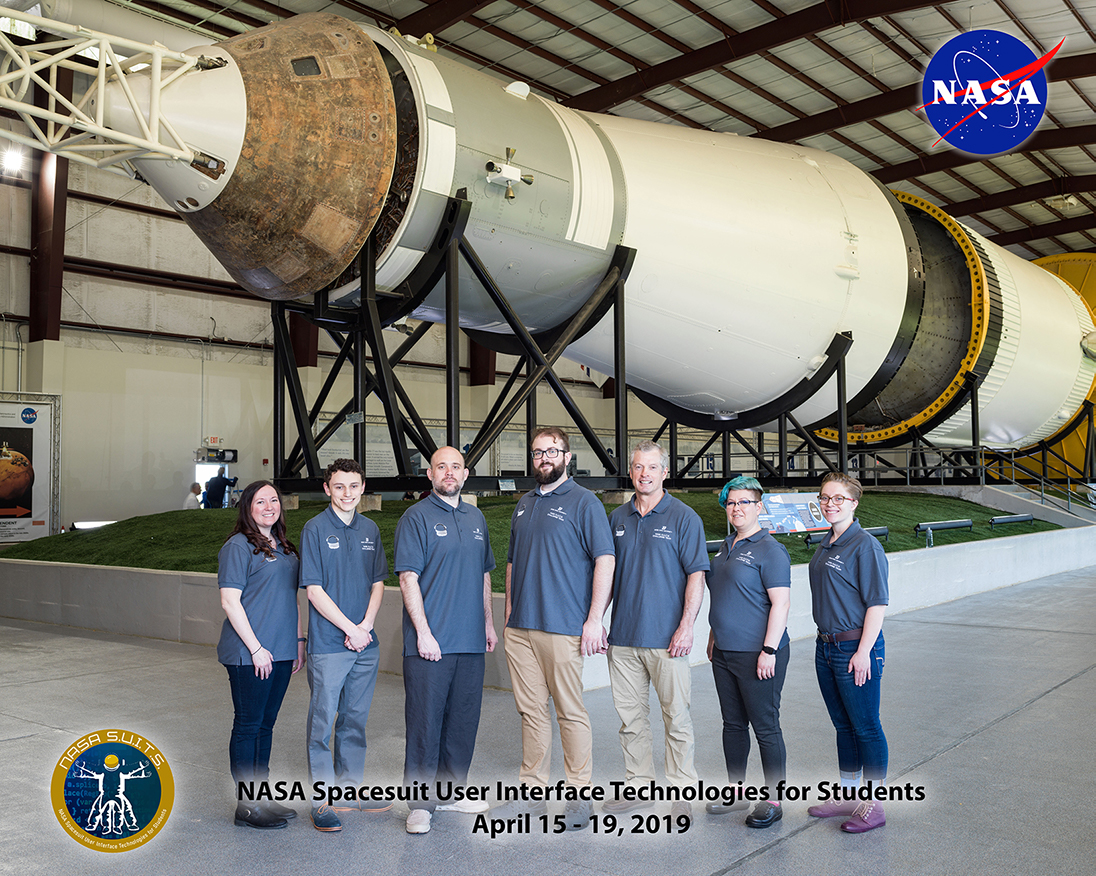
The Team
An all student team lead by students, and mentored by a Retired NASA Astronaut and a HCI (Human Computer Interaction) doctorate.
My Role
Team Lead: organize work, make development decisions, lead meetings/scrums
Collaborate with a UX Designer
Work with 7 developers, an astrophysics consultant, a Visual Designer, a NASA mentor, an HCI mentor, 3 Project Managers (JSC), and 2 Project Interns (JSC)
Take project from brainstorm to handoff
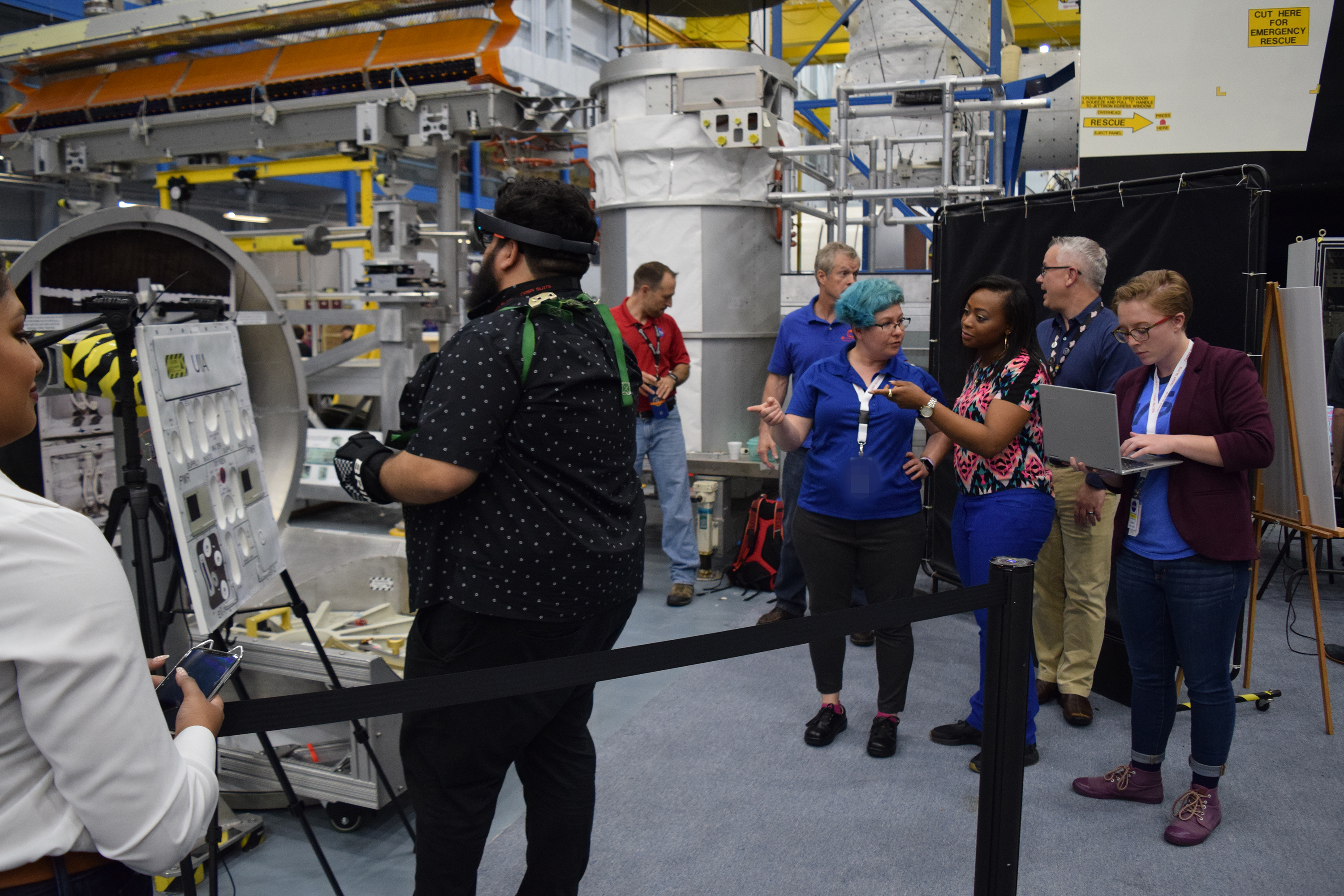
ARSIS 2.0 on a Timeline
Meet with Mentors
Assess new challenges
Create plan
Create new interface(s)
Integrate interface and new modules
Create testing plan
Testing at BSU
Testing at JSC
Wrap project for shipping to NASA S.U.I.T.S.
Keeping the Process Organized
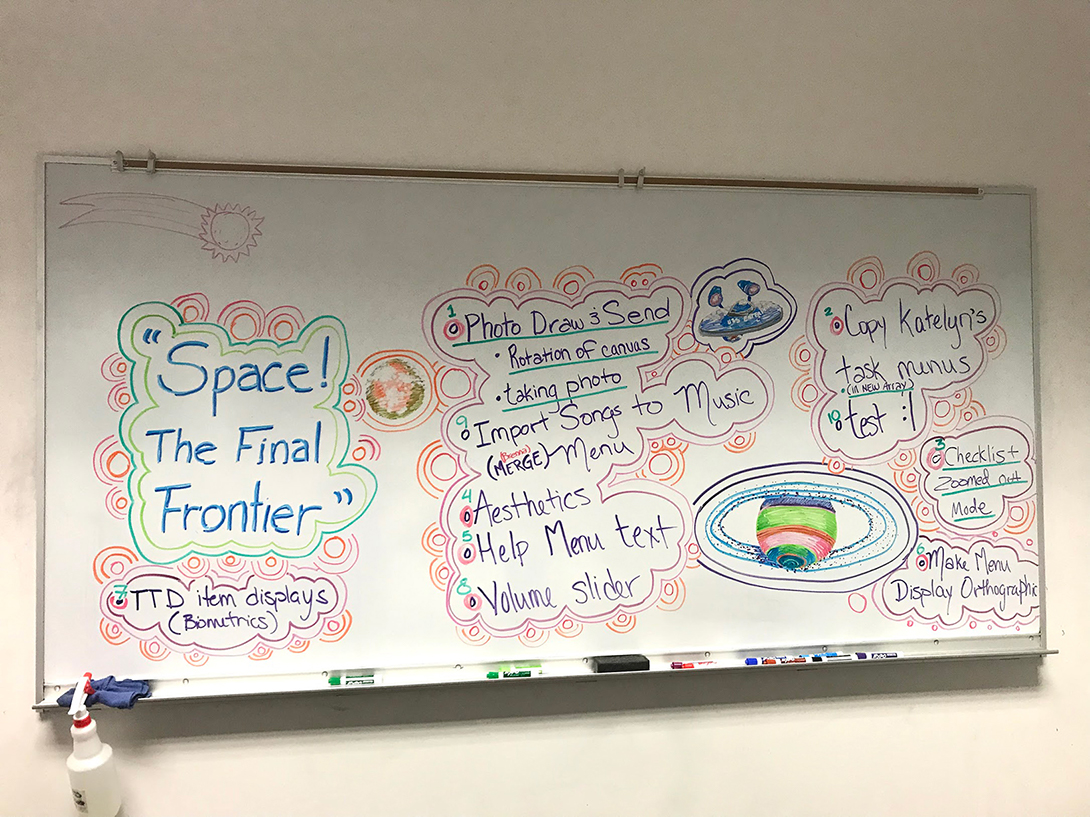
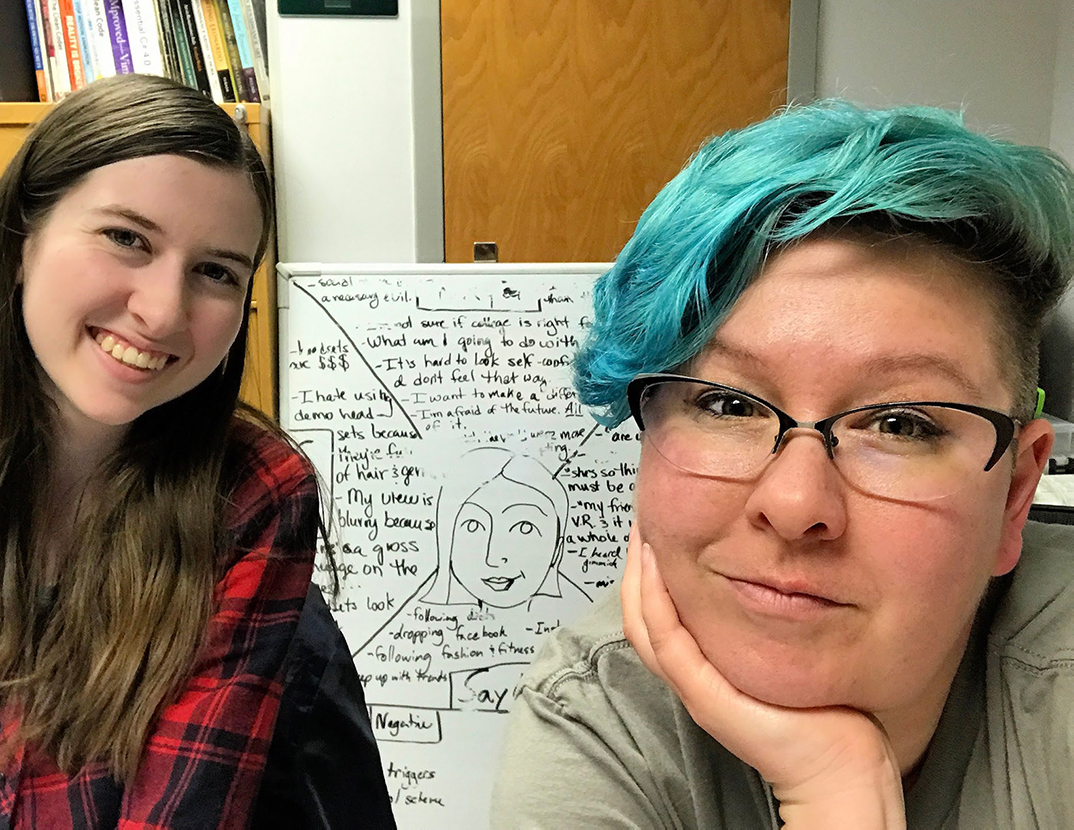
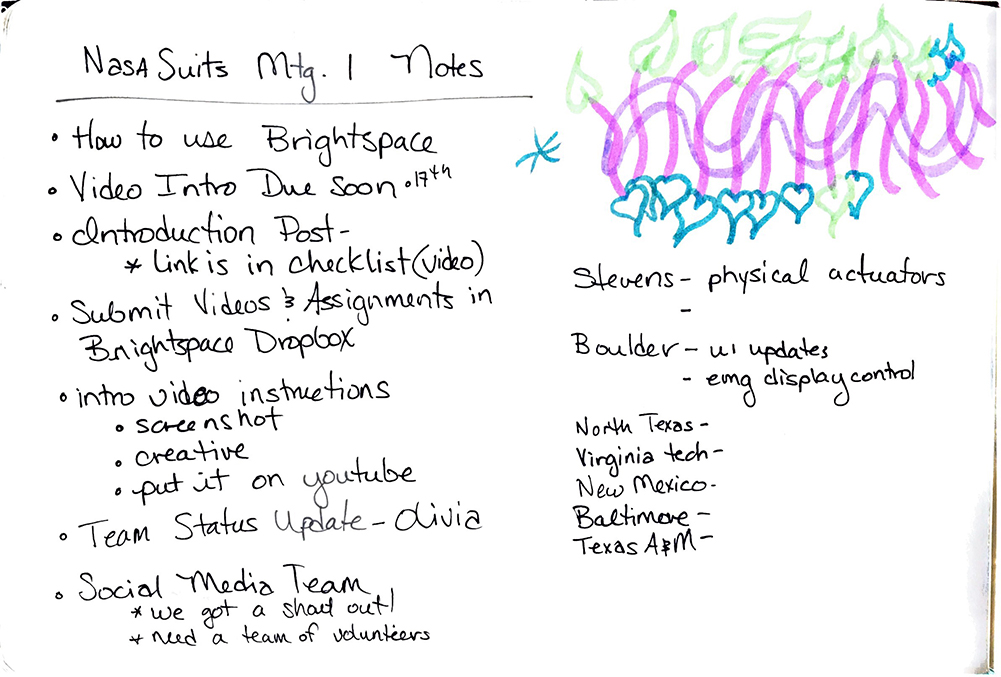
Space-boots to Fill: Continuing the Tradition of Pushing Technological Boundaries
This year, NASA SUITS brought us the problem of navigation during a spacewalk, while on the outside of the ISS. According to interview research with 2 retired NASA Astronauts, we learned that in microgravity it’s easy to get turned around, especially on a structure as large as the ISS. Additionally, we wanted to create a new 2.5D interface (2D assets in a 3D environment), for more efficient memory use. I worked with another UX Designer in creating the new style guides for ARSIS 2.0, which we based off of a combination of NASA's own style guides and our own research into the emerging field of AR and MR interfaces. For these reasons, I updated the GUI.
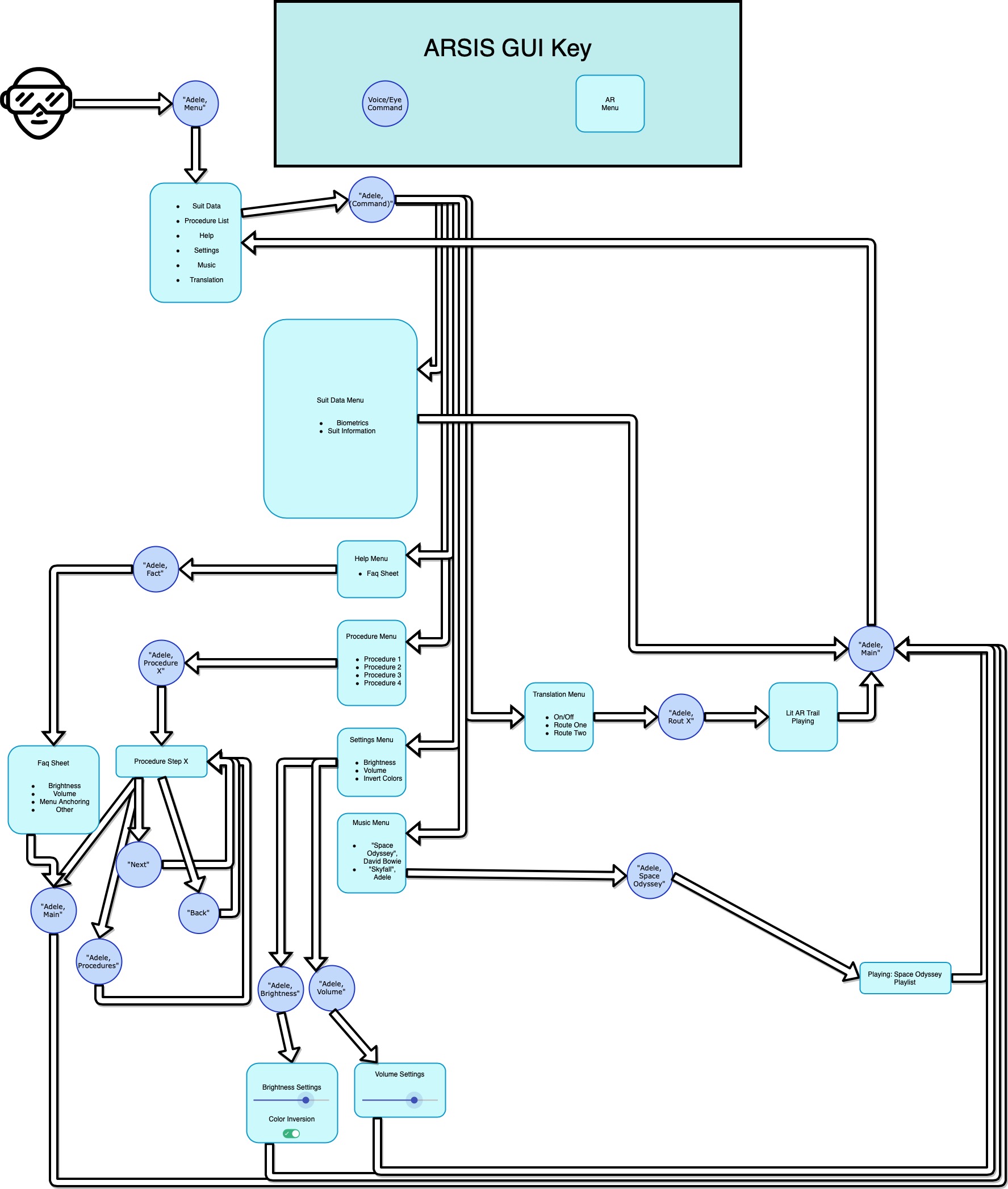
Leadership and Work Process
As the Team Lead for the 2018/2019 BSU NASAU SUITS Team, it was my job to organize work, make sure decisions were made, and encourage team spirit.
Working Together: Communicating Well for Optimum Product Output and Team Experience
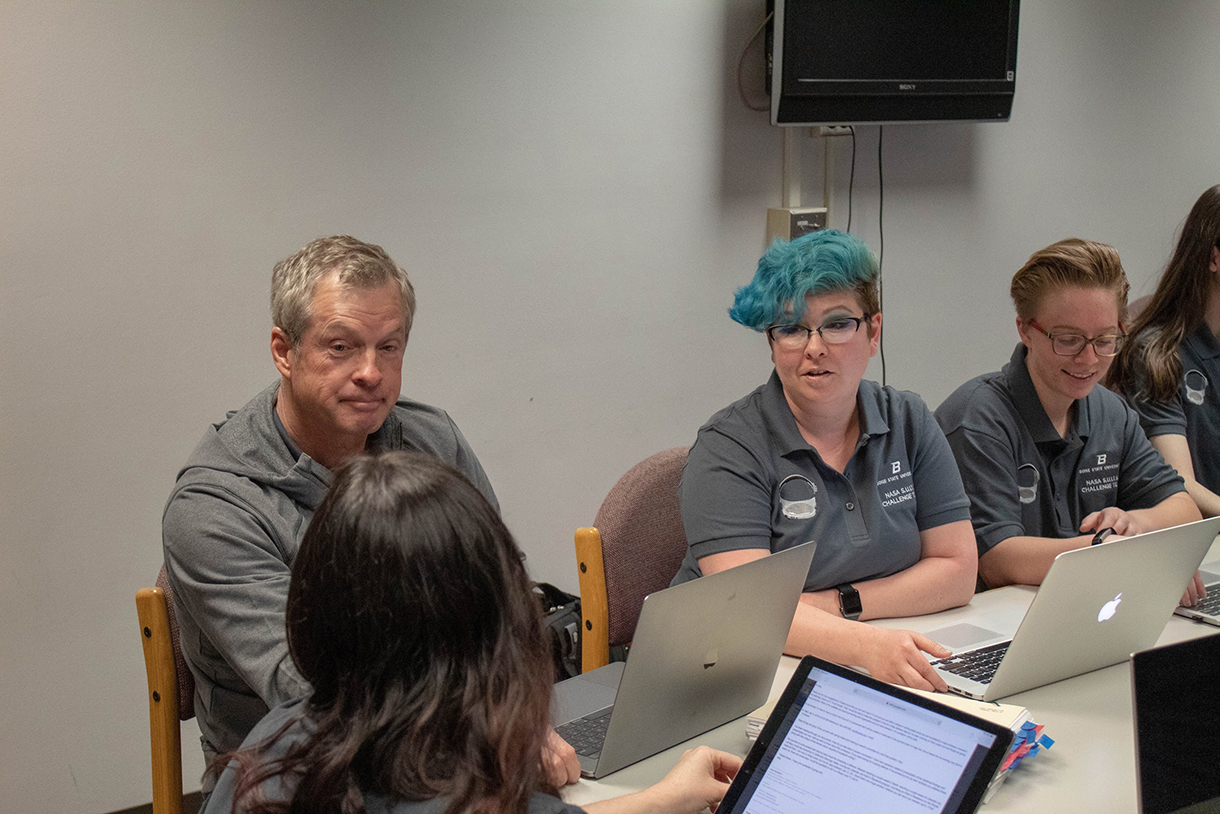
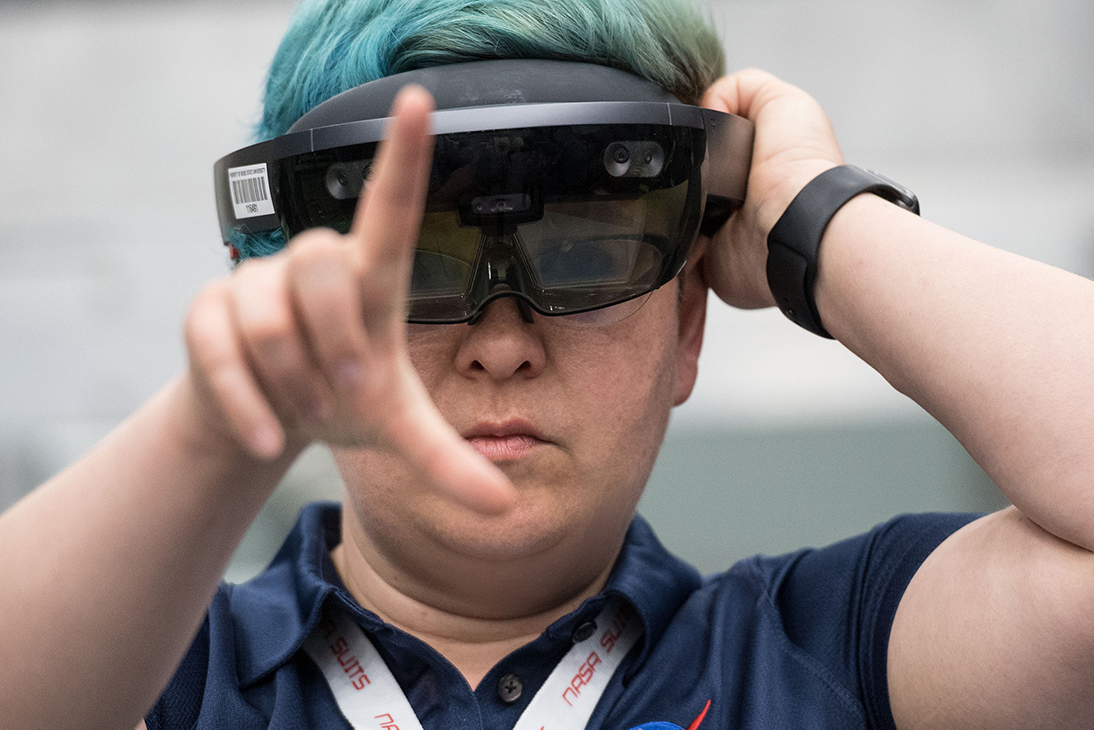
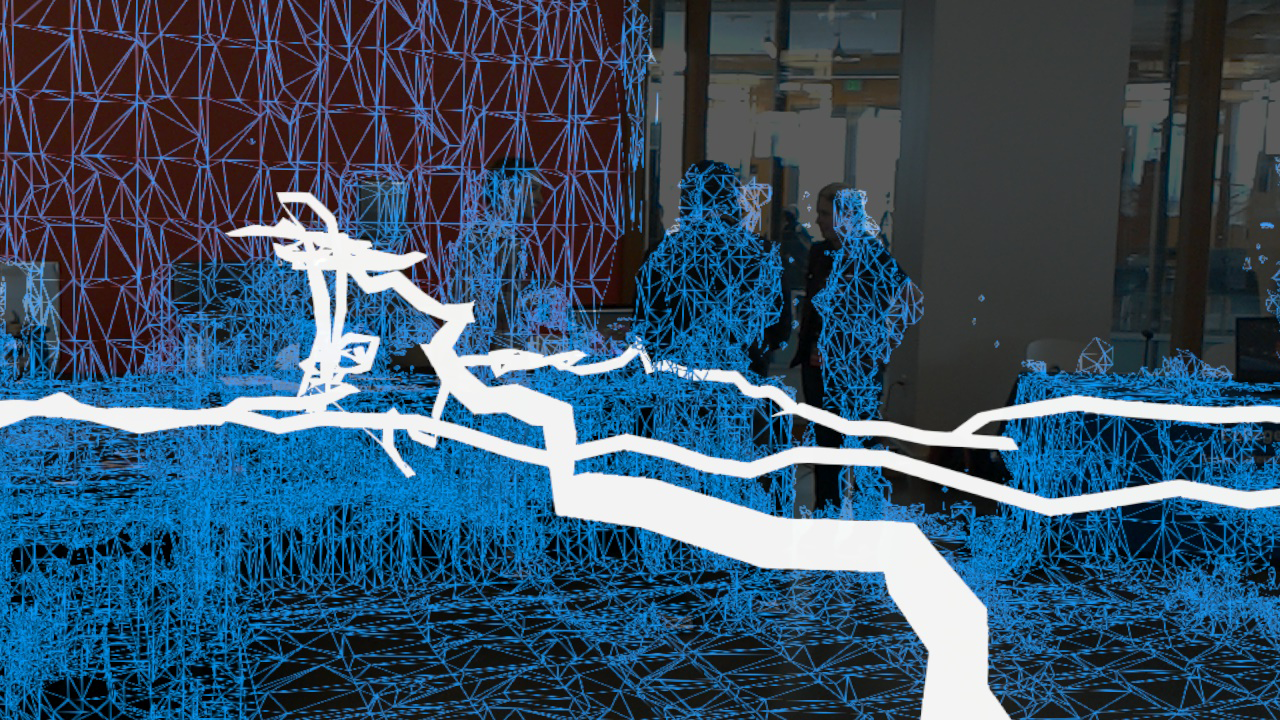
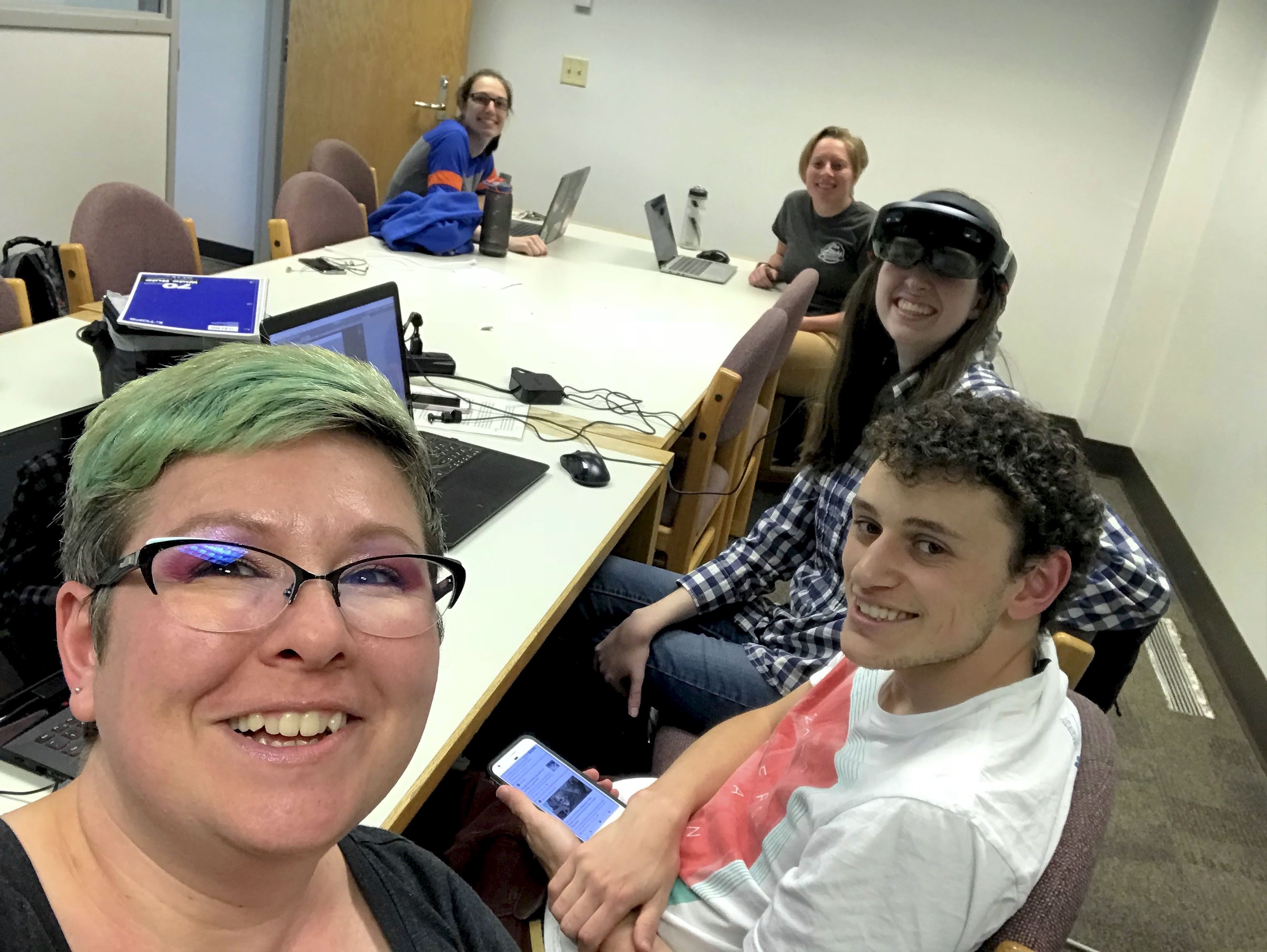
Testing Begins
I worked with both teams and our mentors to incorporate the UX and Interface Design with our new code base (we had a few Github scares, but we figured it out!), and then worked with the same (awesome!) Software Engineer and Astrophysics Consultant to write a user testing plan for ARSIS 2.0. We followed a similar methodology from the previous year, as it had done very well. Moderated usability testing, surveys, interviews, and A/B testing were our tools of choice. We used Qualtrics for user surveys, and combined it with Google Sheets for Data analysis.
Boise State University's 2019 Bronco Days event promised to be a perfect venue for our first round of user testing. Volunteer participants again played through a special testing simulation we created to test usability, interface, and software aspects of ARSIS 2.0. After analysis of the data from these tests we mades some updates to the program in preparation for a second round of testing at NASA’s Johnson Space Center in Houston, TX.
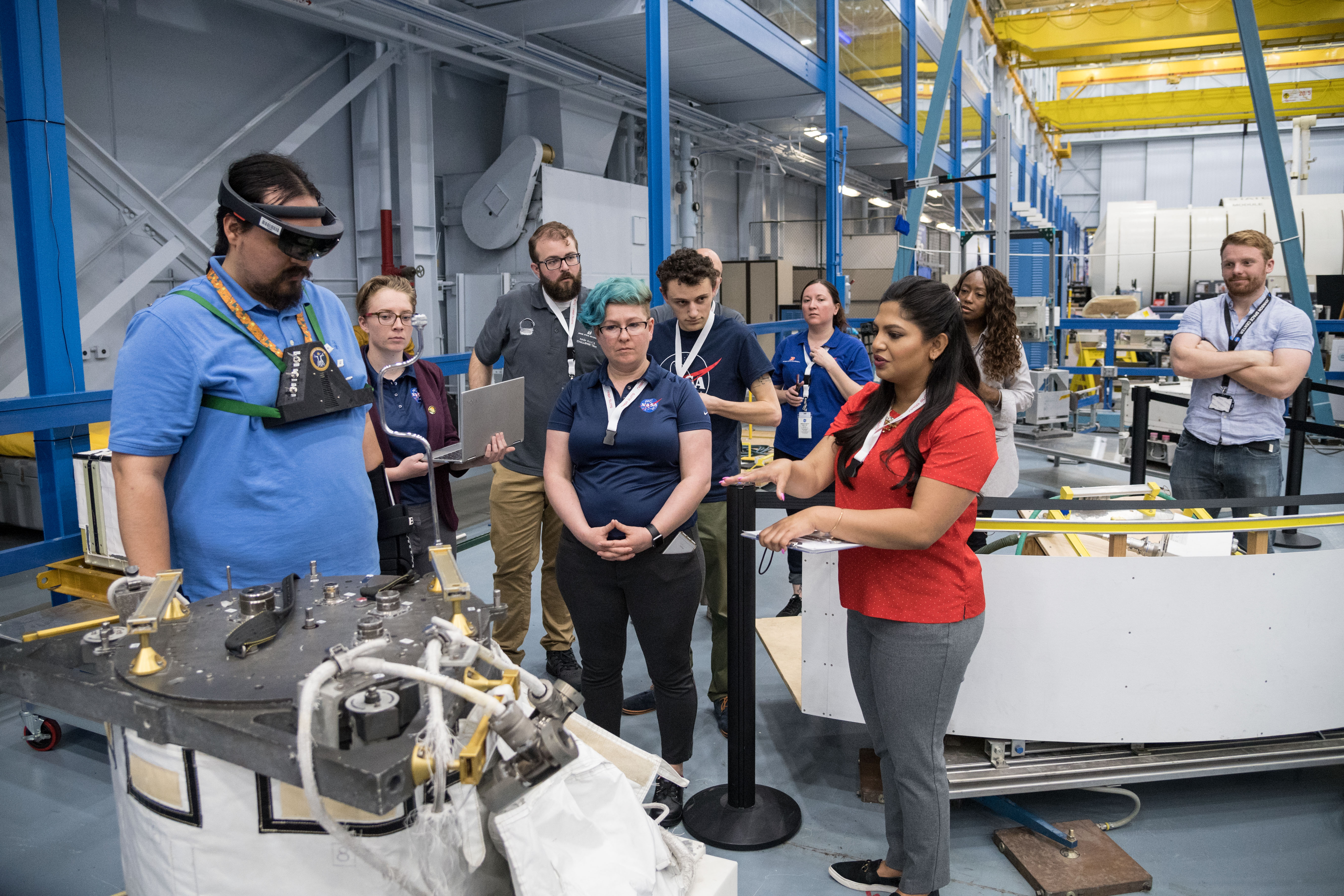
Testing at Johnson Space Center
Under the direction of the NASA SUITS leadership, this testing was conducted on the testing floor of the HIVE Human-In-The-Loop testing facility on NASA JSC campus. In this instance I was the test facilitator, as the tests had been written by NASA engineers. We weren’t able to test a side module of ARSIS 2.0 (the VR Communication and Translation Assistant component) in this test, because of the amount of network noise on the HIVE floor (something the test writers had not taken into account). However, the test went well because of the interface update, and multiple redundancies built into the navigational assistant. We were able to demonstrate the full software to the esteemed engineers there, and received extremely positive feedback on our effective use of redundancies, interactive technologies, and communication enhancements.
Solutions
Updated Interface
More Voice Interaction Capability
VR Communication and Translation Assistant
Double Redundant Glyph Tracking Translational Assistance
Web Portal Controller Update
User Testing Results
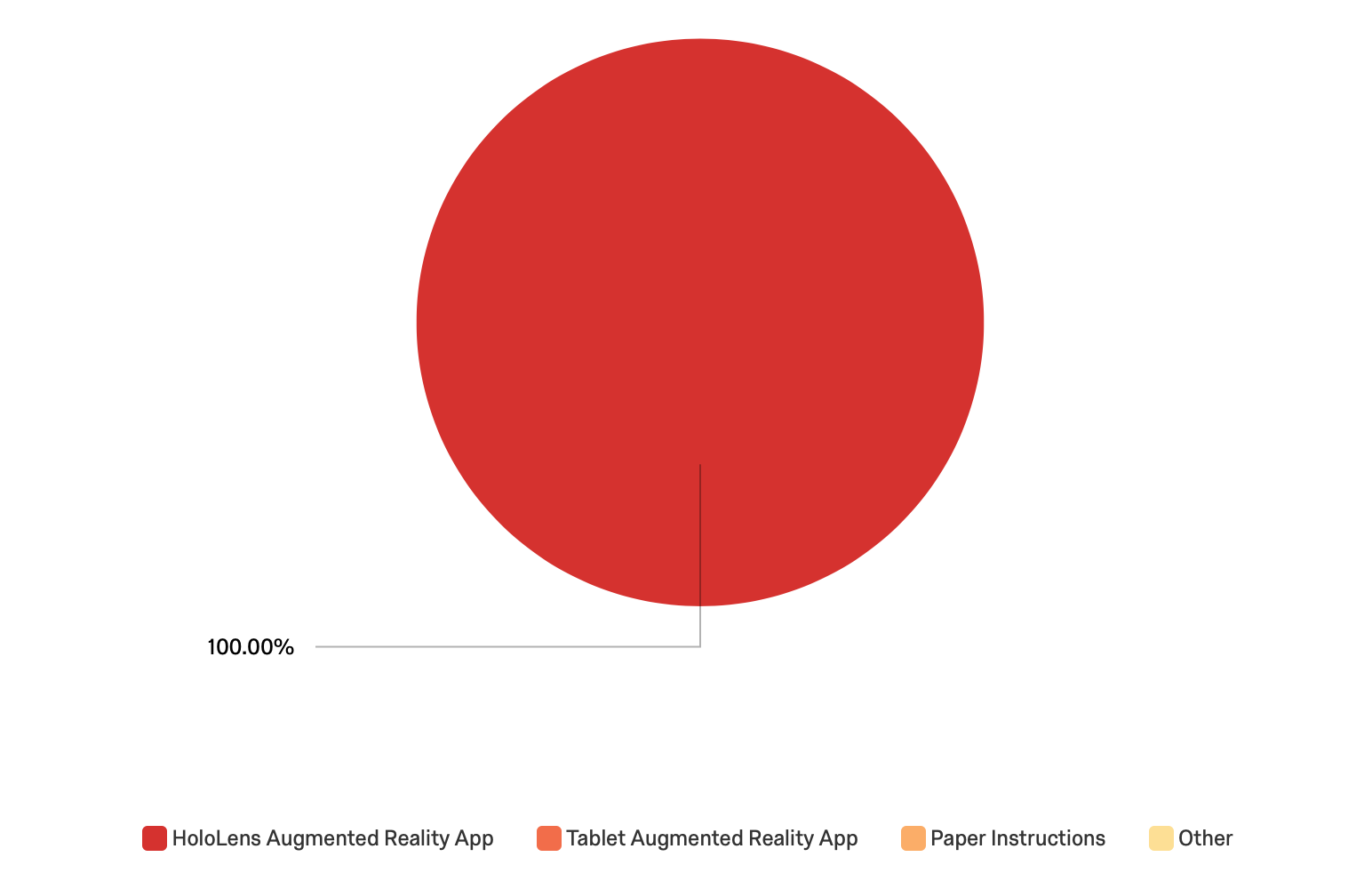
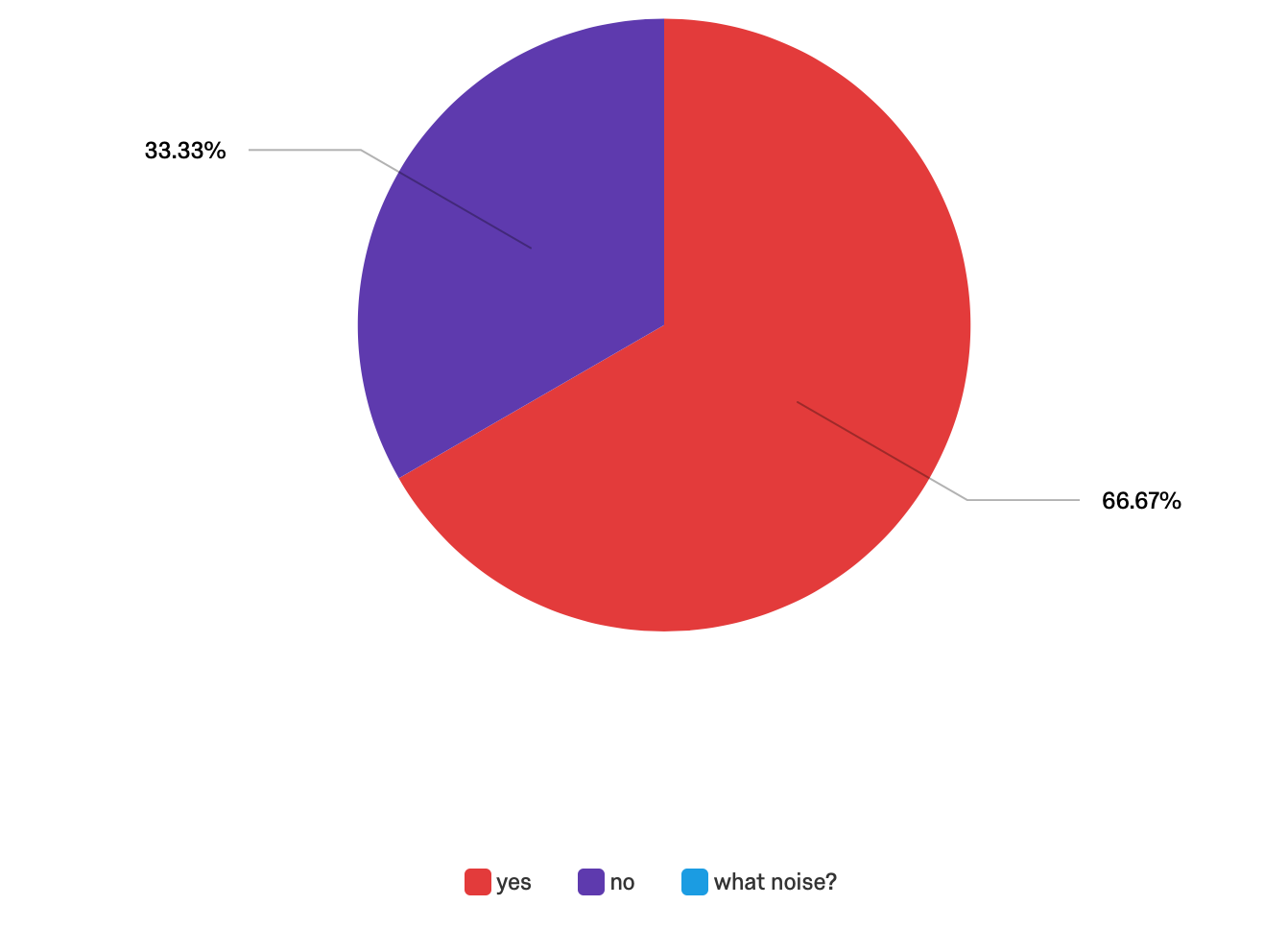
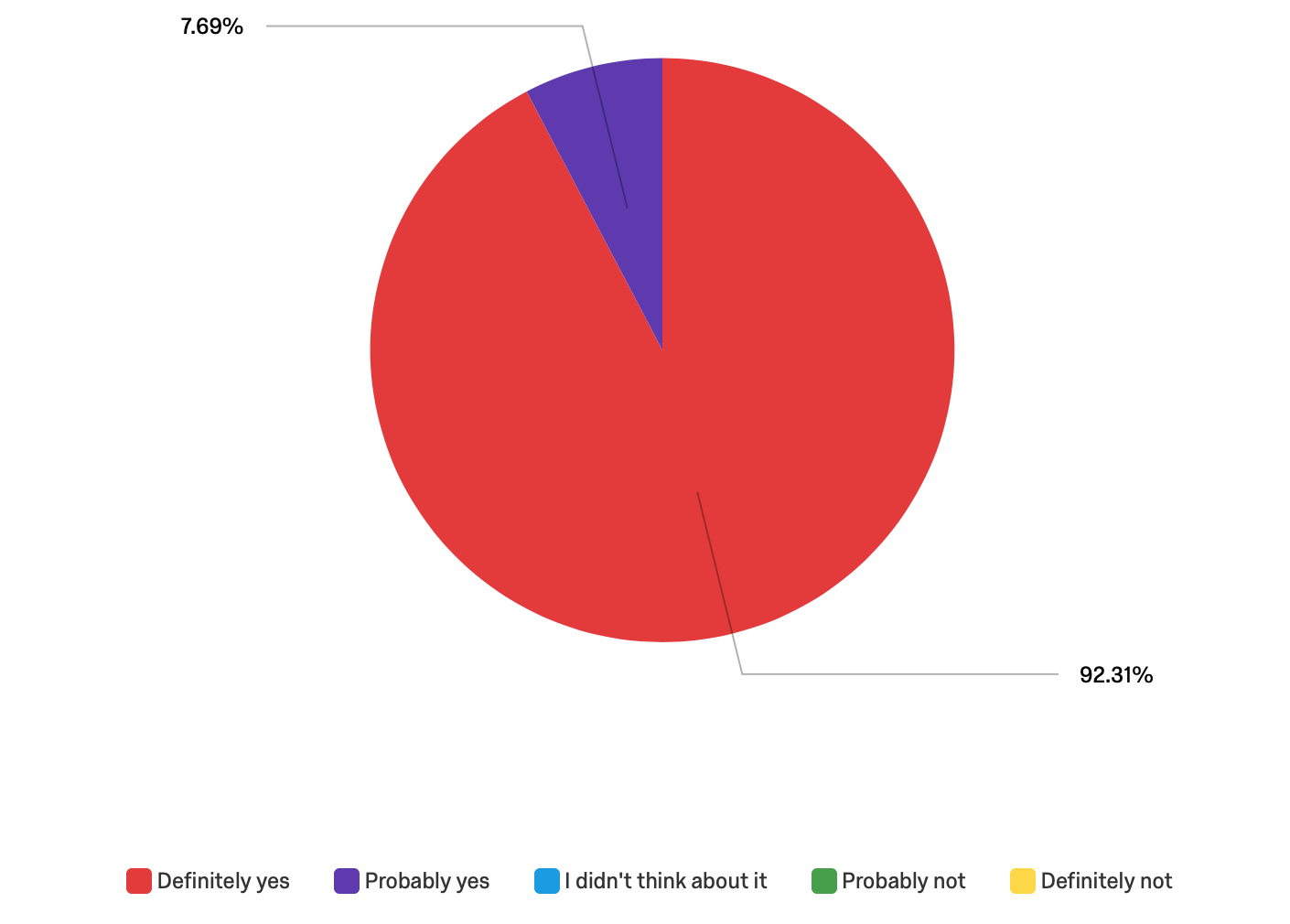




Impact
ARSIS 2.0 was well received, and has reportedly already been integrated with NASA’s current in-house prototype. A photo of our team mid-test at JSC is the cover photo for the 2019/2020 NASA SUITS challenge (see previous photo).
